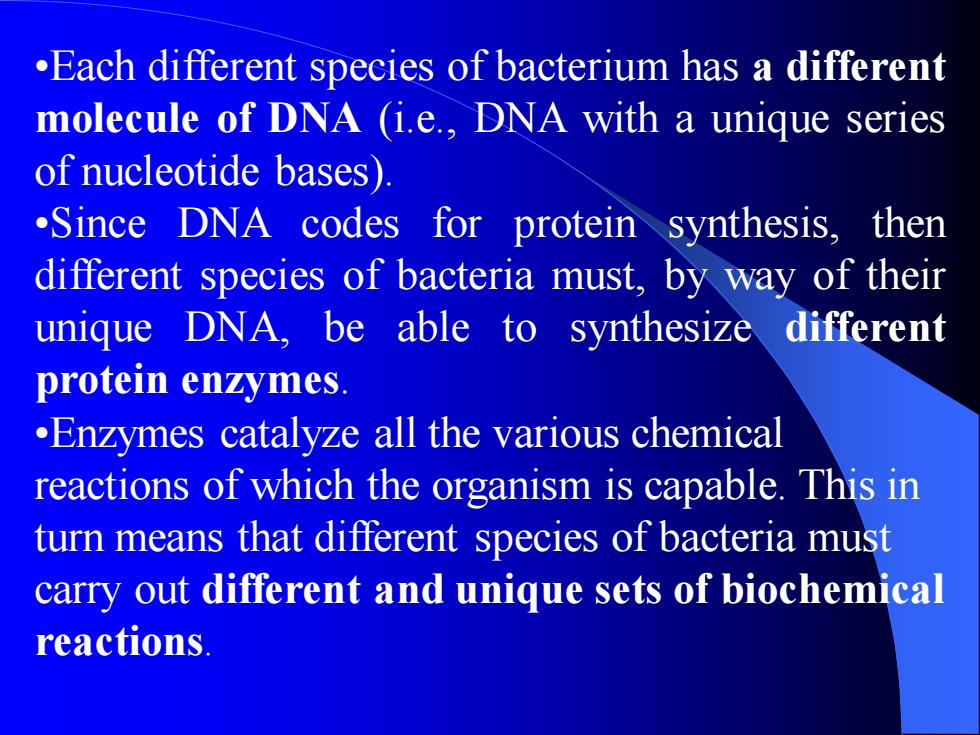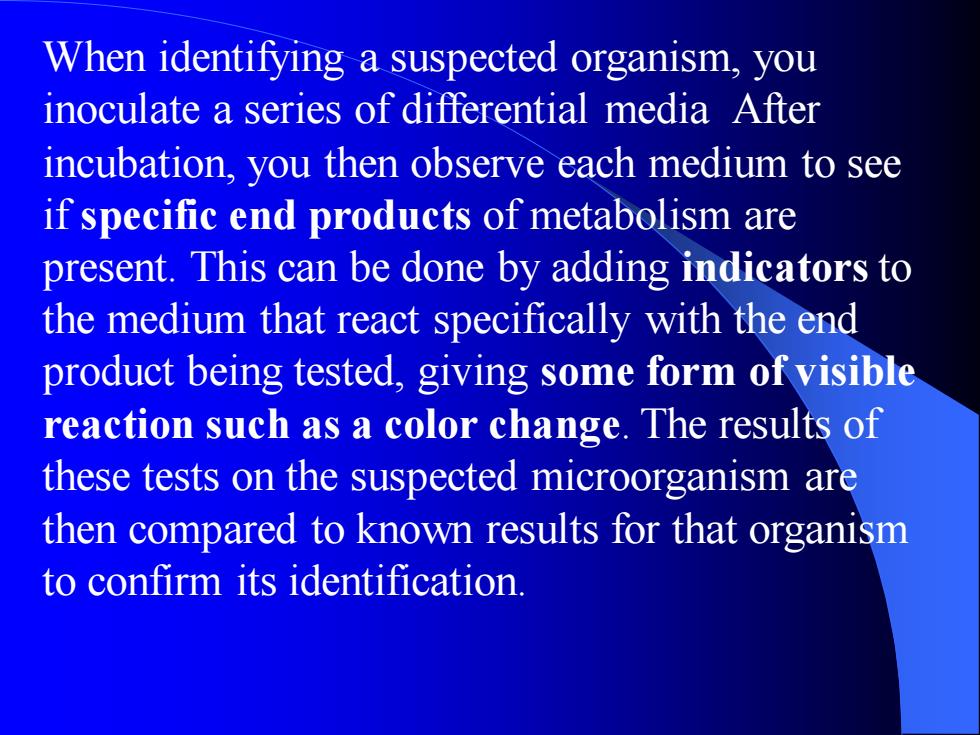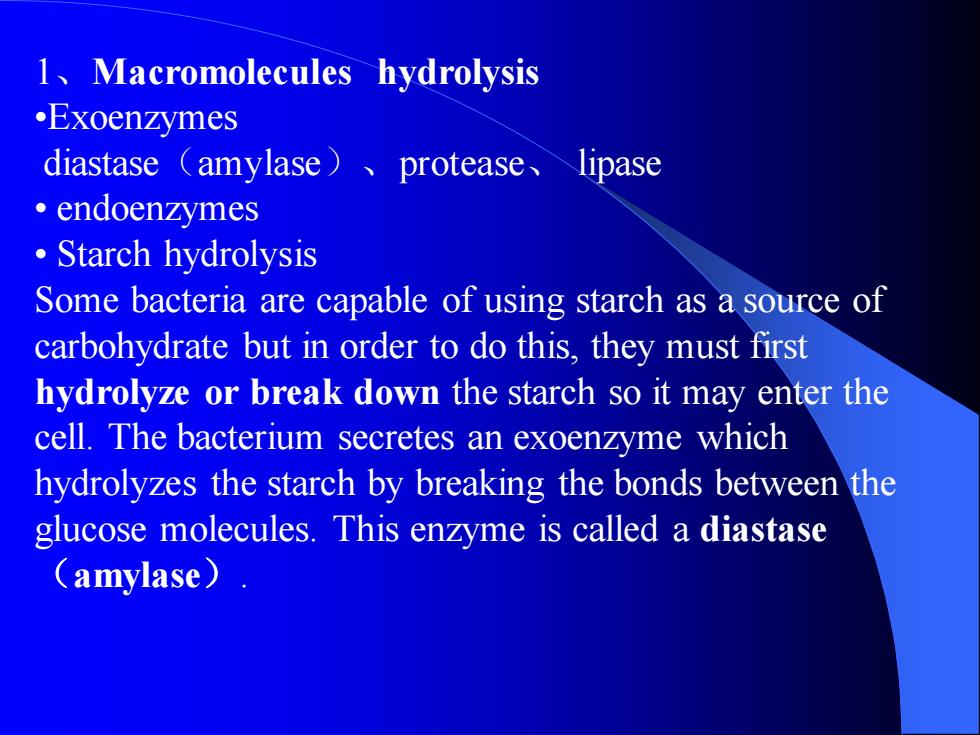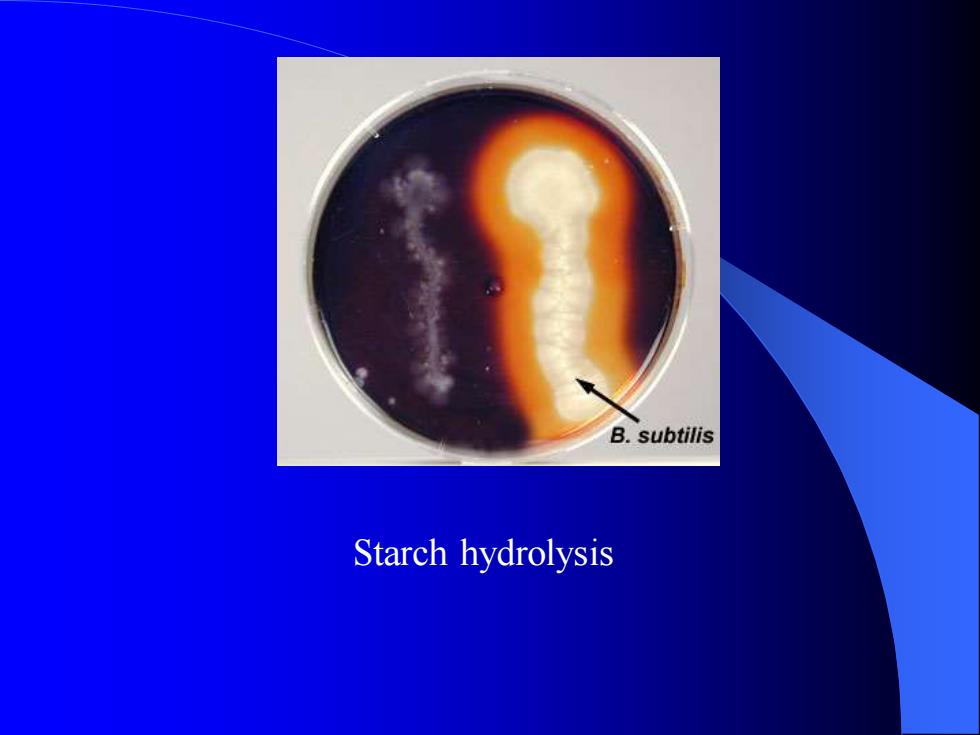
实验三-七 大分子物质的水解实验和IMVIC实验 一、教学要求 了解微生物一些生化反应的原理及其在微生物鉴 定中的应用。 二、简介 To identify bacteria, we must rely heavily on biochemical testing. The types of biochemical reactions each organism undergoes act as a "thumbprint" for its identification. This is based on the following chain of logic:
实验三-七 大分子物质的水解实验和IMVIC实验 一、教学要求 了解微生物一些生化反应的原理及其在微生物鉴 定中的应用。 二、简介 To identify bacteria, we must rely heavily on biochemical testing. The types of biochemical reactions each organism undergoes act as a "thumbprint" for its identification. This is based on the following chain of logic:

•Each different species of bacterium has a different molecule of DNA (i.e., DNA with a unique series of nucleotide bases). •Since DNA codes for protein synthesis, then different species of bacteria must, by way of their unique DNA, be able to synthesize different protein enzymes. •Enzymes catalyze all the various chemical reactions of which the organism is capable. This in turn means that different species of bacteria must carry out different and unique sets of biochemical reactions
•Each different species of bacterium has a different molecule of DNA (i.e., DNA with a unique series of nucleotide bases). •Since DNA codes for protein synthesis, then different species of bacteria must, by way of their unique DNA, be able to synthesize different protein enzymes. •Enzymes catalyze all the various chemical reactions of which the organism is capable. This in turn means that different species of bacteria must carry out different and unique sets of biochemical reactions

When identifying a suspected organism, you inoculate a series of differential media After incubation, you then observe each medium to see if specific end products of metabolism are present. This can be done by adding indicators to the medium that react specifically with the end product being tested, giving some form of visible reaction such as a color change. The results of these tests on the suspected microorganism are then compared to known results for that organism to confirm its identification
When identifying a suspected organism, you inoculate a series of differential media After incubation, you then observe each medium to see if specific end products of metabolism are present. This can be done by adding indicators to the medium that react specifically with the end product being tested, giving some form of visible reaction such as a color change. The results of these tests on the suspected microorganism are then compared to known results for that organism to confirm its identification

1、Macromolecules hydrolysis •Exoenzymes diastase(amylase)、protease、 lipase • endoenzymes • Starch hydrolysis Some bacteria are capable of using starch as a source of carbohydrate but in order to do this, they must first hydrolyze or break down the starch so it may enter the cell. The bacterium secretes an exoenzyme which hydrolyzes the starch by breaking the bonds between the glucose molecules. This enzyme is called a diastase (amylase)
1、Macromolecules hydrolysis •Exoenzymes diastase(amylase)、protease、 lipase • endoenzymes • Starch hydrolysis Some bacteria are capable of using starch as a source of carbohydrate but in order to do this, they must first hydrolyze or break down the starch so it may enter the cell. The bacterium secretes an exoenzyme which hydrolyzes the starch by breaking the bonds between the glucose molecules. This enzyme is called a diastase (amylase)

Starch hydrolysis
Starch hydrolysis